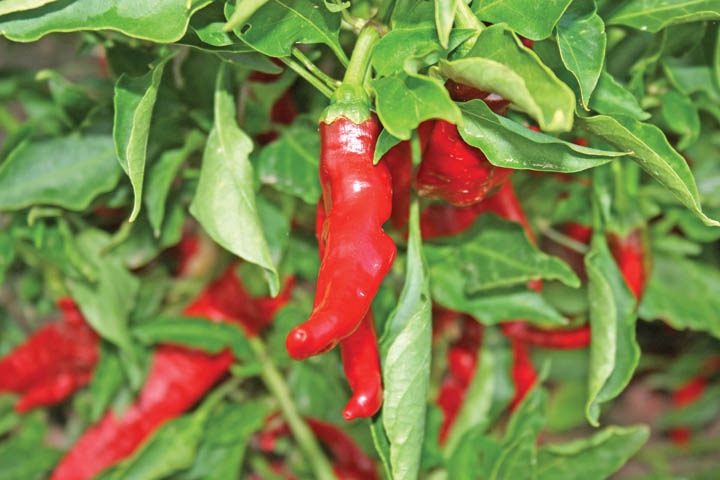September 22, 2010

Management of armyworm and loopers in fall produce
By John Palumbo, UA Research Scientist and Extension Specialist
Bagrada bugs are definitely a major problem currently in the Yuma County, Ariz., area. Pest control is likely consuming a large portion of pesticide spray budgets.
However, do not forget about beet armyworms and cabbage loopers which are historically the most important pests of produce crops in September and October.
Worm pressure has been light during the last several fall growing seasons. If populations showing up on fall melons and early produce thus far are any indication it could be different this fall.
Armyworms are especially abundant on all produce crops at the Yuma Agricultural Center. Loopers have been higher than normal on fall melons. Temperatures are likely driving much of this activity; particularly the higher nighttime temps.
For a review of management guidelines for lepidopterous larvae on produce crops, visit this link.
However, with all the pyrethoids applied to cole crops for bagrada bugs, cabbage looper pressure may actually be low this year. Remember, pyrethroids alone are not very effective against beet armyworms.
Fortunately, there are a number of insecticides that can be applied as stand-alone products to provide effective residual control of these lepidopterous species (click on link).
Until we learn more about the Bagrada bug and the numbers significantly decline, it would be wise to include a pyrethroid with all worm sprays this fall.
Contact Palumbo: (928) 782-3836 or [email protected].
Phytophthora blight in pepper
By Mike Matheron, UA Extension Plant Pathologist
Chile peppers are great to eat and an important crop in Arizona. Production occurs primarily in southeastern Arizona where favorable growing conditions exist.
A disease of peppers called Phytophthora blight can cause significant plant death and yield loss. The pathogen that causes this disease, Phytophthora capsici, resides in the soil and becomes active when the soil is overly wet. The spread of the pathogen and disease development are related to the duration and intensity of summer rainfall events.
Initial infection of plants occurs on roots and stems of plants at the soil surface. Successive rainfall events and sustained high levels of humidity lead to infections on the upper parts of plants, including the leaves, stems, and pepper fruit.
This pathogen is closely related to Phytophthora infestans, the organism responsible for the devastating Irish potato famine that occurred around 1850.
Successful management of Phytophthora blight includes measures to minimize accumulation of excess water in pepper fields, plus the additional applications of fungicides when favorable disease development conditions exist.
Effective fungicides include Ridomil Gold, Revus, Presidio, Ranman, and others.
Contact Matheron: (928) 726-6856 or [email protected].
Using cole crop herbicides effectively
By Barry Tickes, UA Area Agriculture Agent
Dacthal, Prefar, and GoalTender are the primary herbicides used in the low desert on broccoli and cauliflower.
Other options include Trifluralin (Treflan), Devrinol, Stinger, Poast and Select. These herbicides have different characteristics and should be used differently for maximum weed control and crop safety.
Dacthal (DCPA) is effective only when applied prior to weed emergence. It does not prevent weed seed germination. Dacthal is absorbed at the growing points between the radicle and cotyledon leaves. This is called the coleoptile on grasses and the hypocotyl on broadleaf weeds. Weeds sometime emerge but stop growing.
To be effective, Dacthal should be concentrated near the growing points. It sticks well to the soil and needs a fair amount of water to incorporate when using sprinklers. Furrow irrigation works plus if the bed tops are thoroughly moistened.
Applying Dacthal to dry soil and incorporating it with light amounts of sprinkler or furrow water does not work. The herbicide works best when the soil is moist at application. Dacthal is fairly broad spectrum but is weak on mustards, sunflower, and the thistle family.
Prefar (Bensulide) adheres well to soil but works at the root tips instead of the region between the radicle and cotyledon leaves. Dacthal and Prefar are not systemic and move very little in plants. These products work only where the roots and shoots contact them.
Prefar must be incorporated with large amounts of sprinkler water or chemigated. Furrow irrigation, even when it thoroughly moistens the bed, will not incorporate the herbicide on most soils.
Prefar is best used on grasses, purslane, and pigweed and will control lambsquarters and goosefoot in some situations.
GoalTender (Oxyfluorfen) differs greatly from Dacthal and Prefar. It works primarily on the foliage even when used as a pre-emergence herbicide. It is used pre-emergence and postemergence and has no activity on roots or shoots.
GoalTender inhibits the production of an enzyme in the plant that leads to the destruction of cell membranes. It is fast acting, dependent on sunlight, and acts similar to a contact herbicide.
Even when used pre-emergence to the weeds, GoalTender is dependent on sunlight. The weeds must emerge from the ground. The weeds absorb the herbicide during emergence and twice the postemergence rate is normally required. Since a barrier is created on the surface, any disturbance of the soil after application can reduce control.
Contact Tickes: (928) 580-9902 or [email protected].
You May Also Like




